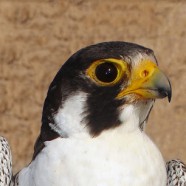
Formed in 1994 as a not-for profit tax-exempt 501 (c) (3) organization, Earthspan’s initial focus was population studies of migrating tundra peregrine falcons that its principals had been conducting for many years. Thanks to those principals, satellite technology was just then assuming its now prominent role in tracking the falcons and other migrating species. We have monitored these migrants since 1970 through blood sampling to determine what, if any, exposure to contaminants and infectious diseases they encounter during migration and in their critical habitats. Earthspan has compiled and maintains a unique archive representing thousands of peregrine blood samples that may be analyzed to define the evolution and progression of emerging threats through these sentinel apex predators. Our long-term standardized data sets on migrating peregrines are unparalleled worldwide. In 2019 we formalized a collaborative partnership with longtime colleagues The Peregrine Fund (www.peregrinefund.org) to further our important research goals and theirs.
Analysis of the satellite-derived animal location data with Geographic Information Systems (GIS) can relate animal movements and activities to geo-political boundaries, habitats, ecological community structures, land use activities and virtually any geographically discrete database. Additional technology tools, such as remote sensing – i.e. satellite and aerial imagery – allow scientists to evaluate habitats, vegetation cover, soil moisture and community structures without having to visit the site in person.
These technologies can be applied to any species large enough to carry a satellite-received transmitter. Earthspan principals pioneered the development of satellite biotelemetry technology for wildlife research applications beginning in the 1980s. The smallest such transmitters currently available now weigh less than 10 grams. We collaborated also in the recent development of small transmitters that collect GPS locations and relay them to researchers via GSM cell phone towers. With these technologies animals can be tracked anywhere on Earth.
Earthspan principals have studied a wide variety of avian species, including Peregrine Falcons, Gyrfalcons, Ferruginous, Swainson’s, Red-tailed and Broad-winged Hawks, Golden and Bald Eagles, Steller’s Sea Eagles, White-faced Ibis, Common Loons, Brown and American White Pelicans, and Greater Sage-grouse. The group has also tracked a variety of other animals, such as Pronghorn, Oryx, Wild Horses, and Wolves. We can conduct collaborative studies or wholly address research agendas with in-house expertise, as we have done with grants from the National Science Foundation, the Department of Defense, and various foundations.
Earthspan also developed the Eye of the Falcon, an interdisciplinary environmental science curriculum for middle and high school students that utilizes GIS, remote sensing data, and satellite tracking of wildlife to teach core concepts in the life sciences and to involve students in cutting-edge scientific research and technology.
Earthspan Board of Directors and Officers:
Chairman and President – Gregg E. Doney
Vice President – Michael A. Yates
Secretary – M. Blake Henke
Treasurer – B. James Dayton
Vice President, Education and Development – William S. Seegar, PhD
With Gratitude to the members of our Institutional Animal Care and Use Committee:
William C. Satterfield, DVM (Chairman)
Robert A. Whitney, DVM
Thomas D. Ray, DVM
Many Thanks for the Contributions of Past Directors and Officers:
Robert A. Whitney, DVM, MS, ACLAM
Dennis O. Johnsen, DVM
Kimberlee M. Ray, CPA, MS
Michael Colopy
Thomas L. Maechtle
